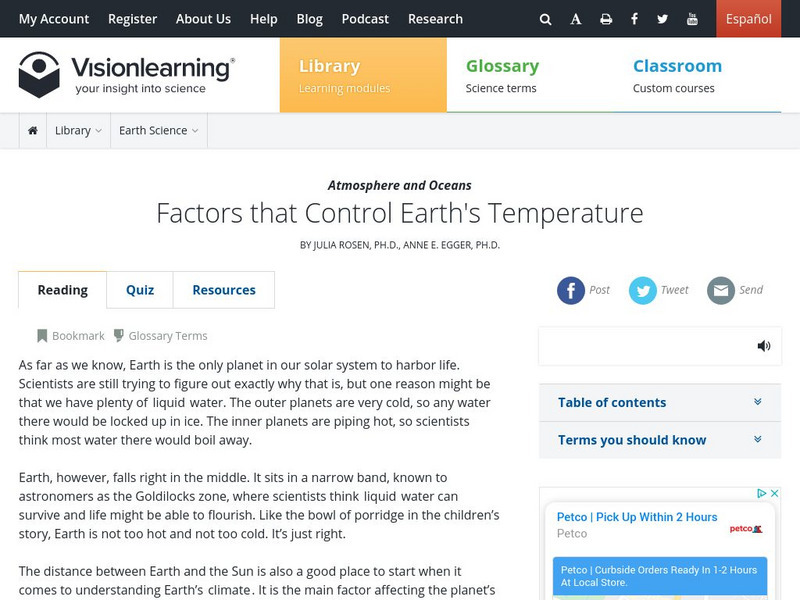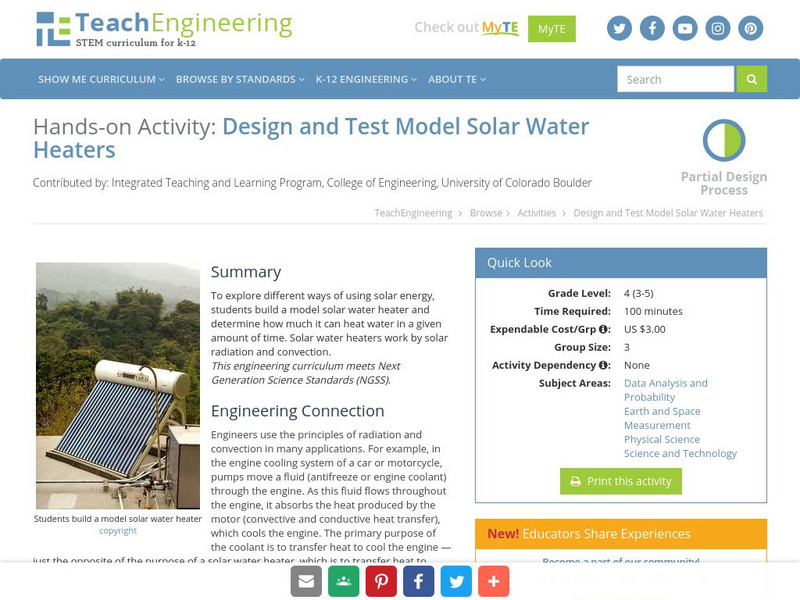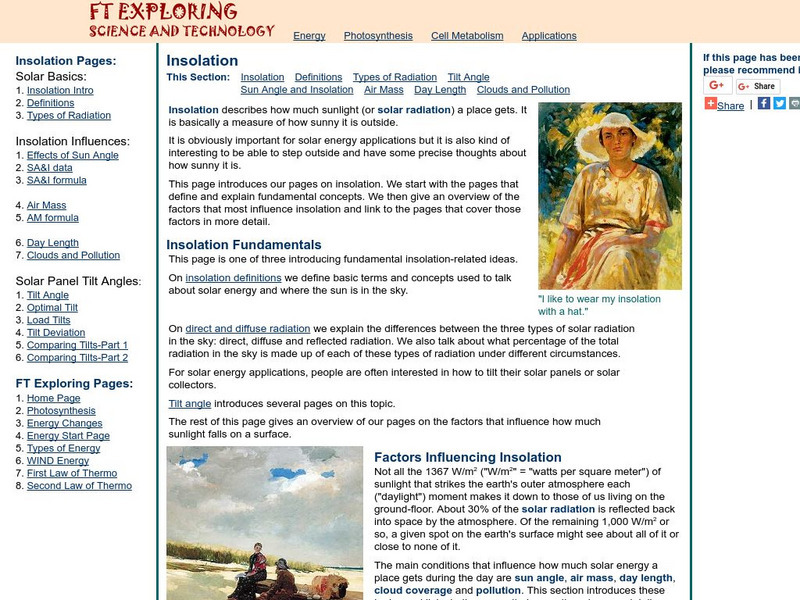Curated OER
Aerosol Science
In this aerosol activity, students are given data for volcanic eruptions and the average temperatures of the Earth. They determine the change in temperature from the year of the eruption to the present year and use the means to determine...
Curated OER
An Overview of Solar Radiation
Students use the Stefan-Boltzmann Law and the Wien displacement law to determine the amount of energy the sun emits.
Curated OER
Exploring Solar Beads
Young scholars discover solar energy beads and learn about ultraviolet light. In this solar energy lesson, students learn about solar energy beads, ultraviolet light, and UV radiation dangers. Young scholars experiment with the beads to...
Curated OER
What is Climate?
In this climate worksheet, students review the components that make up climate including temperature and precipitation. This worksheet has 8 true or false and 2 short answer questions.
Curated OER
Sunrise and Sunset
Students utilize a Mesonet daily solar radiation to determine the times of sunrise and sunset and the length of the day. They describe how sunrise and sunset change with latitude and longitude and how the length of the day changes with...
Curated OER
Examples for Socratic Questioning: Climate And Solar Radiation
Students explore the various controls on the amount of solar radiation received at different parts of the Earth's surface by participating in a whole class discussion. They respond to prompts that lead them to conclusions about the...
Curated OER
Clouds and Solar Radiation
Students use satellite imaging and Mesonet solar radiation maps to answer questions given to them by the teacher and look for differences and similiarities in the data.
Curated OER
A Solar Project
High schoolers make predictions about the global temperature of the earth and to see how this is dependent upon a number of variables. Students visualize how changing parameters can impact the global temperature of the earth.
Curated OER
Clouds and Solar Radiation
Students examine how clouds affect incoming solar radiation. They compare and contrast satellite images and incoming solar radiation measurements as methods to provide information about clouds.
Geographypods
Geographypods: Patterns in Environmental Quality and Sustainability
This collection of five learning modules looks at issues related to environmental change and sustainability. Topics addressed include changes in the atmosphere, soil, water, and biodiversity, and what can be done to counteract this and...
BioEd Online
Bio Ed Online: Measuring and Protecting Skin
Students learn about the vulnerability of skin to solar radiation, and ways to protect it. They compare their skin to that of an orange, and measure the approximate amount of skin that each has. The lesson and accompanying PowerPoint can...
PBS
Pbs: Scientific American Frontiers: The Arctic Our Global Thermostat
Scientists believe that the climate in the Arctic is an indicator of global climatic conditions. Learn what makes the Arctic so unique and how scientists use this information to predict global changes. Informative photos accompanied by...
NOAA
Noaa: The Ionosphere [Pdf]
SEC produced several articles to help teachers teach about space weather. This one covers the ionosphere. It covers the characteristics, variability, and scintillation of this layer of the atmosphere. PDF format.
National Geographic
National Geographic: Using Models to Make Predictions
Students investigate the interaction between greenhouse gases, solar radiation, and the Earth's surface and oceans for the impact on global warming. By altering variables, they can project what reduction in greenhouses gases is needed in...
Georgia Department of Education
Ga Virtual Learning: Weather and Climate
In this amazingly comprehensive interactive tutorial you will learn how factors such as ocean currents, topography, and air currents affect weather patterns. You will also learn the similarities and differences between weather and climate.
Vision Learning
Visionlearning: Atmosphere and Oceans: Factors That Control Earth's Temperature
An explanation of how temperature is affected by the composition of the atmosphere and how energy flows in and out of Earth's atmosphere.
TeachEngineering
Teach Engineering: You're in Hot Water
To explore different ways of using solar energy, students build a model solar water heater and determine how much it can heat water in a given amount of time. Solar water heaters work by solar radiation and convection.
TeachEngineering
Teach Engineering: Solar Power
Students learn about solar energy and how to calculate the amount of solar energy available at a given location and time of day on Earth. The importance of determining incoming solar energy for solar devices is discussed.
University Corporation for Atmospheric Research
Ucar: Atmospheric Science Explorers: Global Climate Change
A detailed overview of global climate change, with explanations of Earth's climate change, the carbon cycle, ecosystems, and greenhouse gases, and how the movements of matter and energy impact on climate. All information is reinforced...
Howard Hughes Medical Institute
Hhmi: Bio Interactive: Paleoclimate: A History of Change
Learn about the history of Earth's climate in this Click and Learn. Learn how many factor control Earth's climate. Specifically, examine two of the most important factors: solar radiation and the composition of Earth's atmosphere.
King's Centre for Visualization in Science
Explaining Climate Change: Lesson 4: Climate: A Balancing Act
How does the Earth's energy balance regulate climate? This is the fourth lesson in a series of learning modules on the topic of climate change. This lesson explores how different factors can impact the amount of energy that enters and...
Science Education Resource Center at Carleton College
Serc: Polar Sea Ice
Polar sea ice, its seasonal variability, and the impact of a changing climate are investigated in this activity. Students will also explore the differences between polar regions that result from Antarctica being a continent and the north...
FT Exploring
Ft Exploring: Insolation and Solar Availability
Learn about insolation, or how much sunlight or solar radiation any given place on Earth receives based on many factors.
PBS
Pbs Teachers: The Climate Change Skeptic's Argument
Lesson plan examines the possibility that the contemporary climate change is due to natural solar cycles. Objectives are to review the evidence of total solar irradiance, analyze data to understand the influence of solar variability, and...









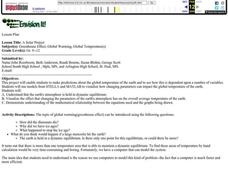
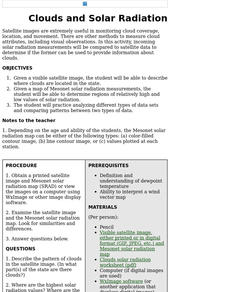
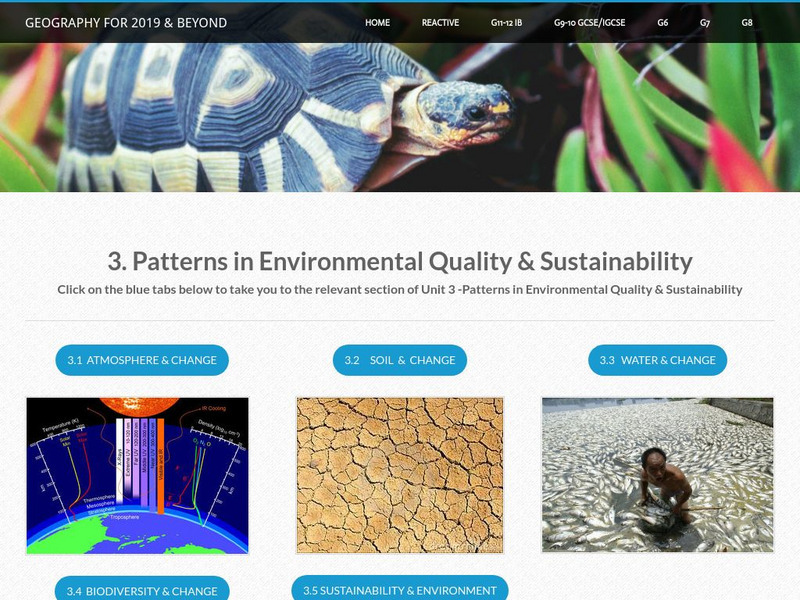
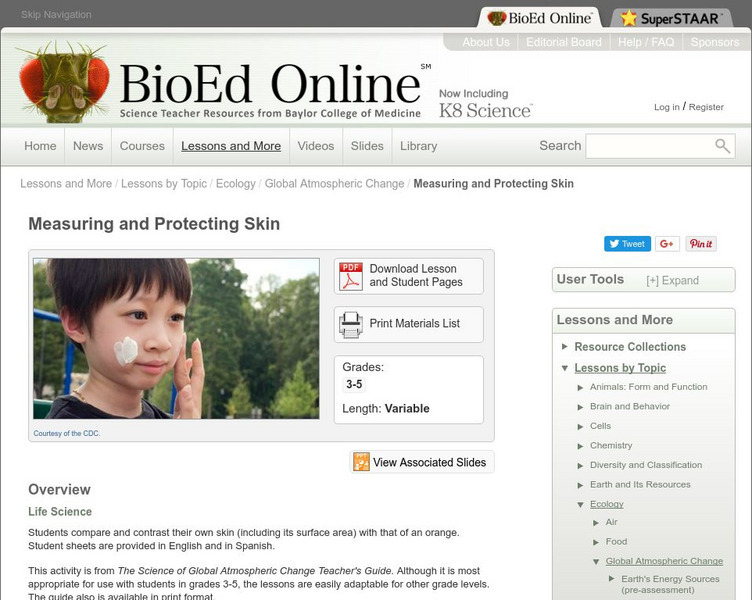

![Noaa: The Ionosphere [Pdf] Handout Noaa: The Ionosphere [Pdf] Handout](https://d15y2dacu3jp90.cloudfront.net/images/attachment_defaults/resource/large/FPO-knovation.png)


